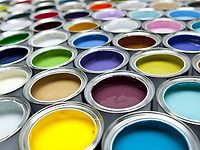Best Practices for Developing Engineered Coatings

When developing engineered coatings (custom coatings), there are many factors to take into account. While labs and chemists have refined their own unique approach to the process, the basic strategy remains fairly consistent.
Experience and Expertise
Since there are infinite product specification needs requiring a wide range of process and performance characteristics, a multitude of custom coating methods have been developed over time. This breadth of options is useful in addressing new products, as well as for improving the cost and quality metrics of existing products. National Polymer draws on experience from past projects and uses this knowledge and expertise when looking for the processes and procedures that may be best when tackling a new engineered coating development project.
Steps in Developing Engineered Coatings
Here are the key steps we follow in the process of developing engineered coatings:
- General process design
- Material specification
- Manufacturing tooling specification and design
- Oven design and automation
- Chemical delivery system
- Statistical optimization software
- Process quality specifications and quality inspection plan
- Process control plan with specific control data points and acceptable ranges
- Surface preparation specification and process method
- Handling procedures
- Manufacturing technician training
- Production ramp-up plan
Over time, we have seen that the best custom coating method for a given application depends on several variables:
- End product requirements
- Conditions in which the coating will be applied
- The fragility and/or robustness of the coating solution and its application
- Economic considerations of producing the finished product
There is not a “best method” that fits all uses, but working with a partner that has both a palette of many methods and a good deal of experience can ultimately determine the success or failure when developing engineered coatings.
Parameters
National Polymer evaluates custom coating formulations to fit a range of requisite parameters when choosing an ideal coating method, including:
- Coating thickness and weight targets before and after curing
- Substrate properties:
- Dimensional stability
- Surface characterization
- Thickness and uniformity
- Surface tension relative to the coating fluid
- Adhesion
- Security features
- Abrasion resistance
Models
Developing models is another approach to developing engineered coatings. These models can provide direction for subsequent experiments to optimize the coating process. Despite their usefulness, models are only guides. Models typically assume idealized conditions that do not fully reflect actual process conditions and custom coating solutions’ physical properties. Experiments are run in combination with the models to verify predictions and refine future experiments, ultimately arriving at the ideal coating for the desired purpose. The importance of predictive modeling, combined with experimentation in both formula and process development, will ensure that when developing an engineered coating, initially established design parameters are achieved.
Looking for a reprint of this article?
From high-res PDFs to custom plaques, order your copy today!







